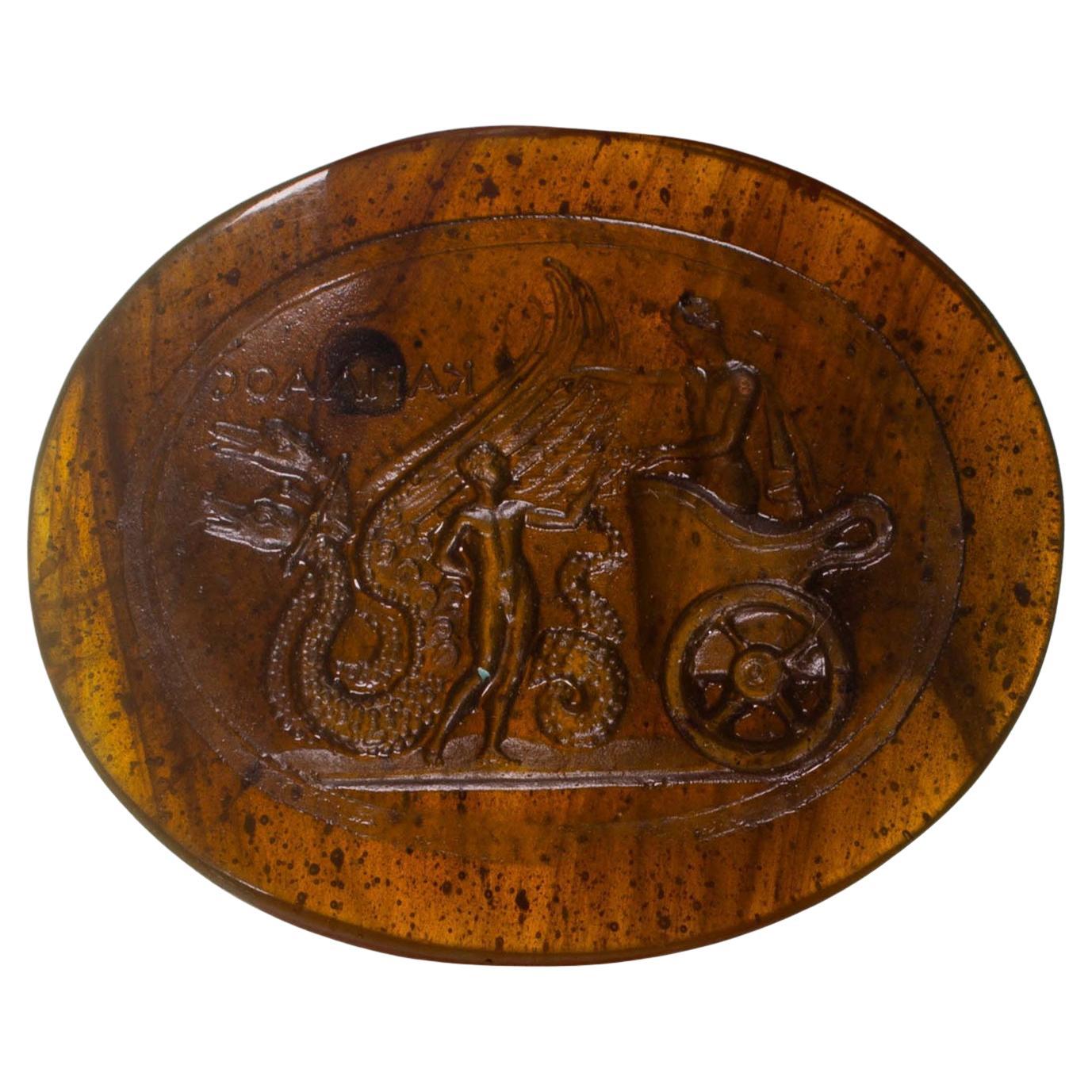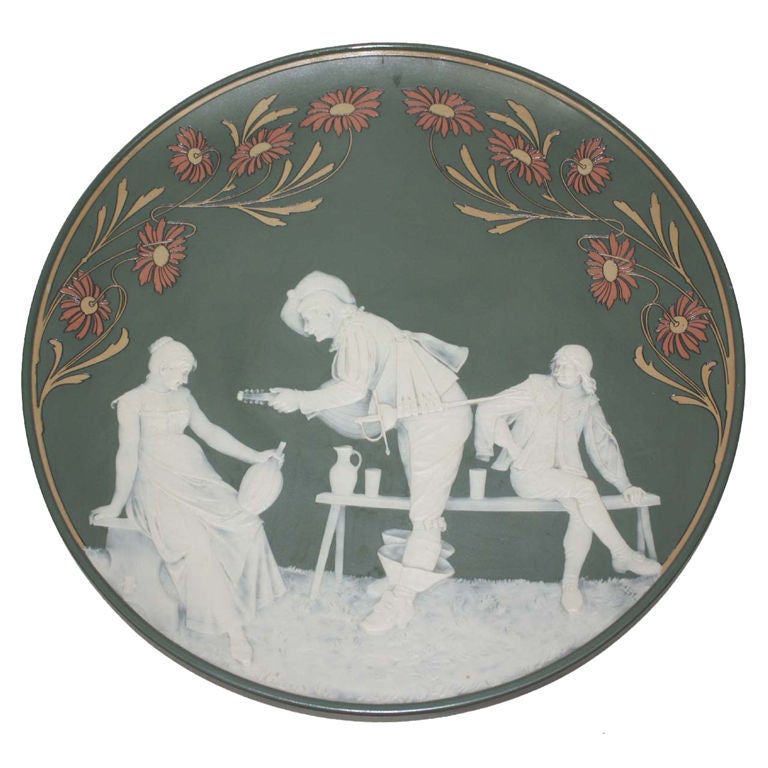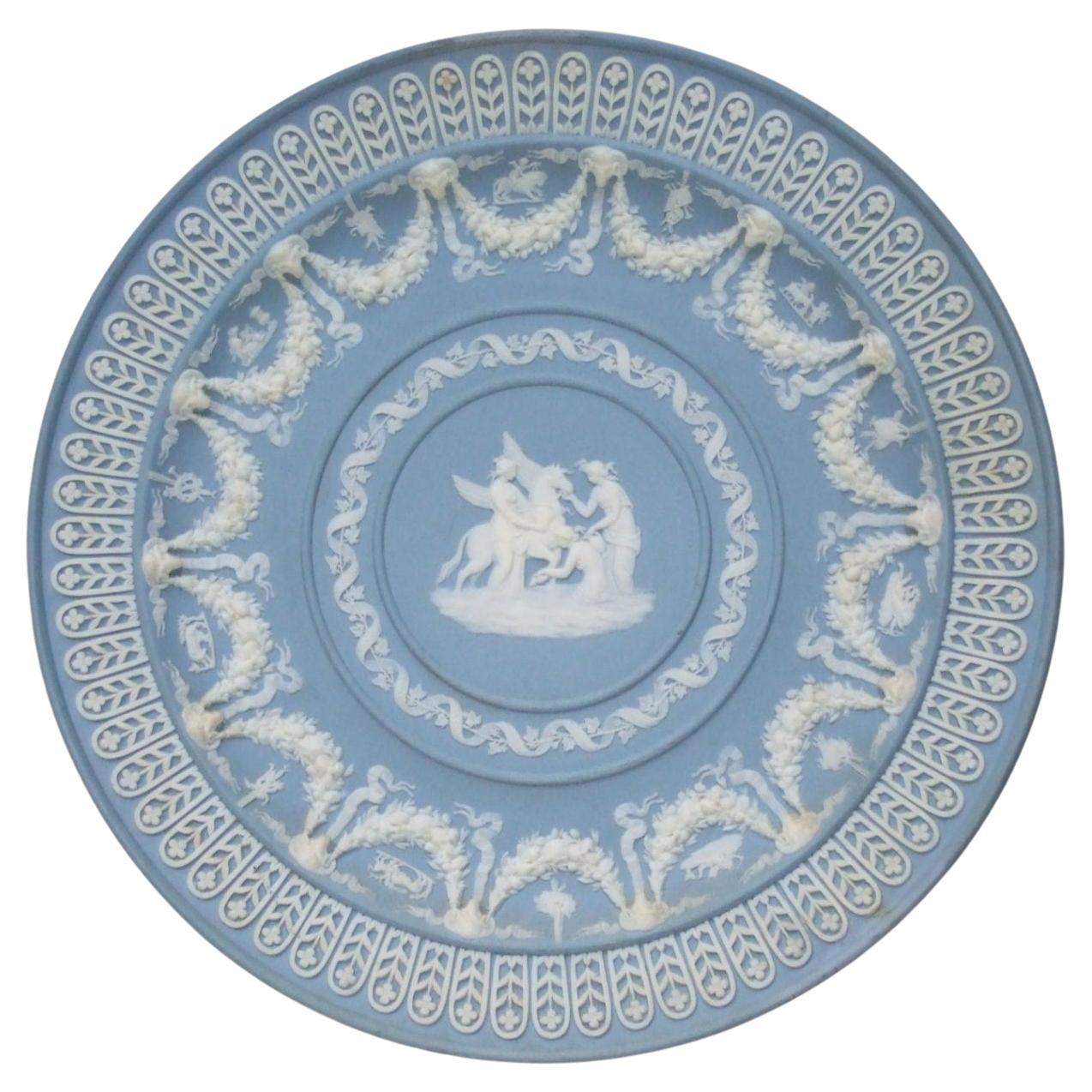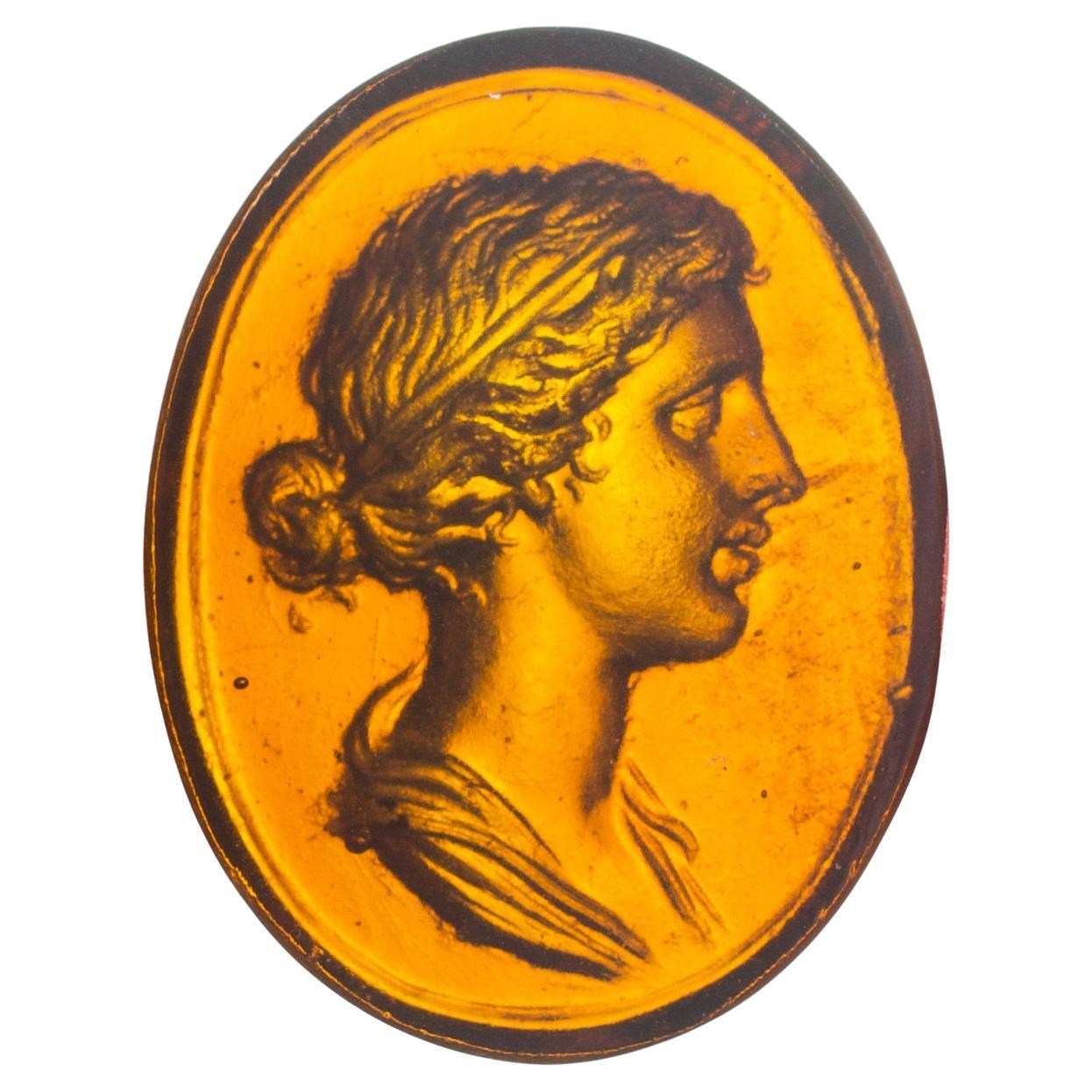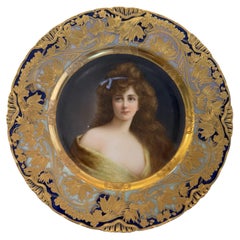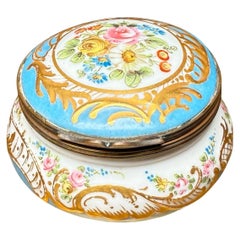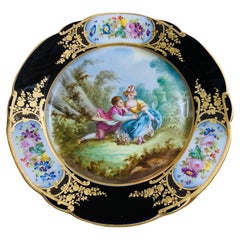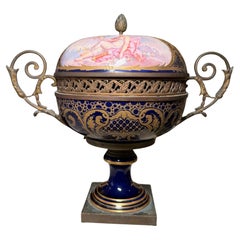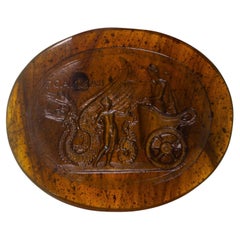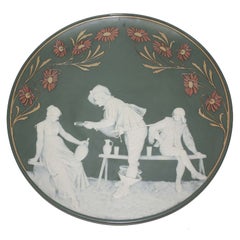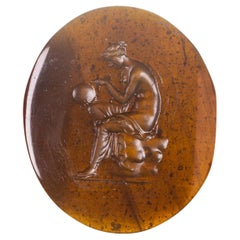Items Similar to Limoges Tharaud “Cameo” Blue Plaque Stand
Want more images or videos?
Request additional images or videos from the seller
1 of 10
Limoges Tharaud “Cameo” Blue Plaque Stand
$200
$25020% Off
£151.63
£189.5320% Off
€174.79
€218.4820% Off
CA$281.67
CA$352.0820% Off
A$312.35
A$390.4420% Off
CHF 164.12
CHF 205.1520% Off
MX$3,816.37
MX$4,770.4720% Off
NOK 2,053.32
NOK 2,566.6520% Off
SEK 1,927.39
SEK 2,409.2420% Off
DKK 1,304.81
DKK 1,631.0220% Off
About the Item
This a Limoges Camille Tharaud pate sur pate blue ceramic plaque depicting a mythological figure-Sphinx who is sitting over a lion. She is holding with one hand a large cornucopia of flowers and with the other one, a bouquet of flowers. Braided bronze frame bordered the plaque and it is part of the stand. It is hallmarked C.Tharaud, Limoges France.
- Creator:Tharaud Limoges (Maker)
- Dimensions:Height: 5.13 in (13.04 cm)Width: 5.13 in (13.04 cm)Depth: 1.38 in (3.51 cm)
- Style:Neoclassical (In the Style Of)
- Materials and Techniques:
- Place of Origin:
- Period:
- Date of Manufacture:1900s
- Condition:Wear consistent with age and use.
- Seller Location:Guaynabo, PR
- Reference Number:1stDibs: LU5431224014902
About the Seller
5.0
Platinum Seller
Premium sellers with a 4.7+ rating and 24-hour response times
Established in 2011
1stDibs seller since 2020
369 sales on 1stDibs
Typical response time: <1 hour
- ShippingRetrieving quote...Shipping from: Guaynabo, PR
- Return Policy
Authenticity Guarantee
In the unlikely event there’s an issue with an item’s authenticity, contact us within 1 year for a full refund. DetailsMoney-Back Guarantee
If your item is not as described, is damaged in transit, or does not arrive, contact us within 7 days for a full refund. Details24-Hour Cancellation
You have a 24-hour grace period in which to reconsider your purchase, with no questions asked.Vetted Professional Sellers
Our world-class sellers must adhere to strict standards for service and quality, maintaining the integrity of our listings.Price-Match Guarantee
If you find that a seller listed the same item for a lower price elsewhere, we’ll match it.Trusted Global Delivery
Our best-in-class carrier network provides specialized shipping options worldwide, including custom delivery.More From This Seller
View AllArt Nouveau Style Royal Vienna Porcelain Portrait Plate
By Royal Vienna Porcelain
Located in Guaynabo, PR
This is an Art Nouveau Royal Vienna Porcelain Portrait Plate. It depicts a round porcelain plate hand painted royal and light blue in its background. At the center of the plate there...
Category
20th Century Austrian Art Nouveau Porcelain
Materials
Porcelain
Sevres Porcelain Trinket Box
By Manufacture Nationale de Sèvres
Located in Guaynabo, PR
This is a Sevres Porcelain Trinket Box. It depicts a round trinket box hand painted turquoise and white color adorned with a bouquet of flowers at the center of its hinged lid. Hand ...
Category
Antique Mid-18th Century French Rococo Porcelain
Materials
Porcelain
Chateau de Tuileries Sevres Style Hand Painted Cabinet Plate
By Chateau des Tuileries
Located in Guaynabo, PR
This is a Chateau de Tuileries Sevres Style hand painted cabinet porcelain plate. It depicts a pastoral scene of a courting couple in the center with a gilt cobalt blue circular rim....
Category
Antique 19th Century French Rococo Decorative Art
Materials
Porcelain
$320 Sale Price
20% Off
Sevres Chateau des Tuilleries Porcelain Bonbonniere
By Manufacture Nationale de Sèvres
Located in Guaynabo, PR
This is a Sevres Chateau des Tuilleries Porcelain Bonbonniere. It depicts a lidded cobalt blue large bowl cup mounted in gilt bronze. The top side of the lid is hand painted with a y...
Category
Early 20th Century French Napoleon III Urns
Materials
Bronze
Ancienne Manufacture Royale et Imperiale de Porcelaines Bronze Porcelain Tray
Located in Guaynabo, PR
An octagonal bronze mounted porcelain dresser tray. It is hand painted with a bouquet of flowers & foliage in its center against a white background. The gilded borderline of the tray...
Category
Antique 19th Century French Neoclassical Revival Porcelain
Materials
Porcelain
$236 Sale Price
20% Off
French Embossed Bronze Squared Trinket/ Jewelry Box
Located in Guaynabo, PR
This is a French bronze metal square hinged lidded box. It depicts a lid decorated with an 18th century country relief scene of two ladies and a gentleman playing with a dog while an...
Category
Early 20th Century French Belle Époque Decorative Boxes
Materials
Bronze
$476 Sale Price
20% Off
You May Also Like
Cameo or intaglio, Triptolemus. Glass. 19th century.
Located in Madrid, ES
Cameo or intaglio, Triptolemus. Glass. 19th century.
Mythological scene with the Greek word “karilaos” (pseudo-signature) showing a young man standing in front of a chariot drawn ...
Category
Antique 19th Century Italian Neoclassical Revival Historical Memorabilia
Materials
Glass
Cameo or intaglio. Glass. Possibly Italy, 19th century.
Located in Madrid, ES
Cameo or intaglio. Glass. Possibly Italy, 19th century.
Blue glass cameo that presents a scene of marked classical influence in which a man with a diadem can be seen, semi-naked an...
Category
Antique 19th Century Italian Neoclassical Revival Historical Memorabilia
Materials
Glass
Mettlach Stoneware Cameo Charger
By Villeroy & Boch
Located in Montreal, QC
Mettlach green matte glaze stoneware charger with cameo vignette of troubadour serenading a young woman (model 2795) and incised floral border. Pierced on back for hanging. Backstamp...
Category
Antique 19th Century German Platters and Serveware
Materials
Stoneware
Cameo or intaglio, Urania. Glass. Possibly Italy, 19th century.
Located in Madrid, ES
Cameo or intaglio, Urania. Glass. Possibly Italy, 19th century.
The semi-naked female figure that appears seated and holding a sphere is often linked to the Muse of Astronomy and A...
Category
Antique 19th Century Italian Neoclassical Revival Historical Memorabilia
Materials
Glass
Trophy Plate, Wedgwood, circa 1880
By Wedgwood
Located in Melbourne, Victoria
Trophy plates were a particularly Victorian development at Wedgwood, taking the use of classical ornament to its absolute limit. Over 2,000 individual sprigs were made, applied, and ...
Category
Antique Late 19th Century English Neoclassical Revival Pottery
Materials
Stoneware
Cameo or intaglio, Lady. Glass. Possibly Italy, 19th century.
Located in Madrid, ES
Cameo or intaglio, Lady. Glass. Possibly Italy, 19th century.
Profile of a woman with her hair gathered in a bun and adorned with a ribbon, following the usual way of representing ...
Category
Antique 19th Century Italian Neoclassical Revival Historical Memorabilia
Materials
Glass
More Ways To Browse
Black Cameo
Limoges Blue
Large Limoges
Large Cornucopia
Glass Cornucopia
Limoges Black
Limoges Flowers
Silver Cornucopia
Antique Glass Cornucopia
Limoges Framed
Bronze Cameo
Silver Lion Figure
Mythological Cameos
Limoges Plaques
Ceramic Cornucopia
Pate Sur Pate Plaque
Antique George Jones Majolica
Staffordshire Chinoiserie
